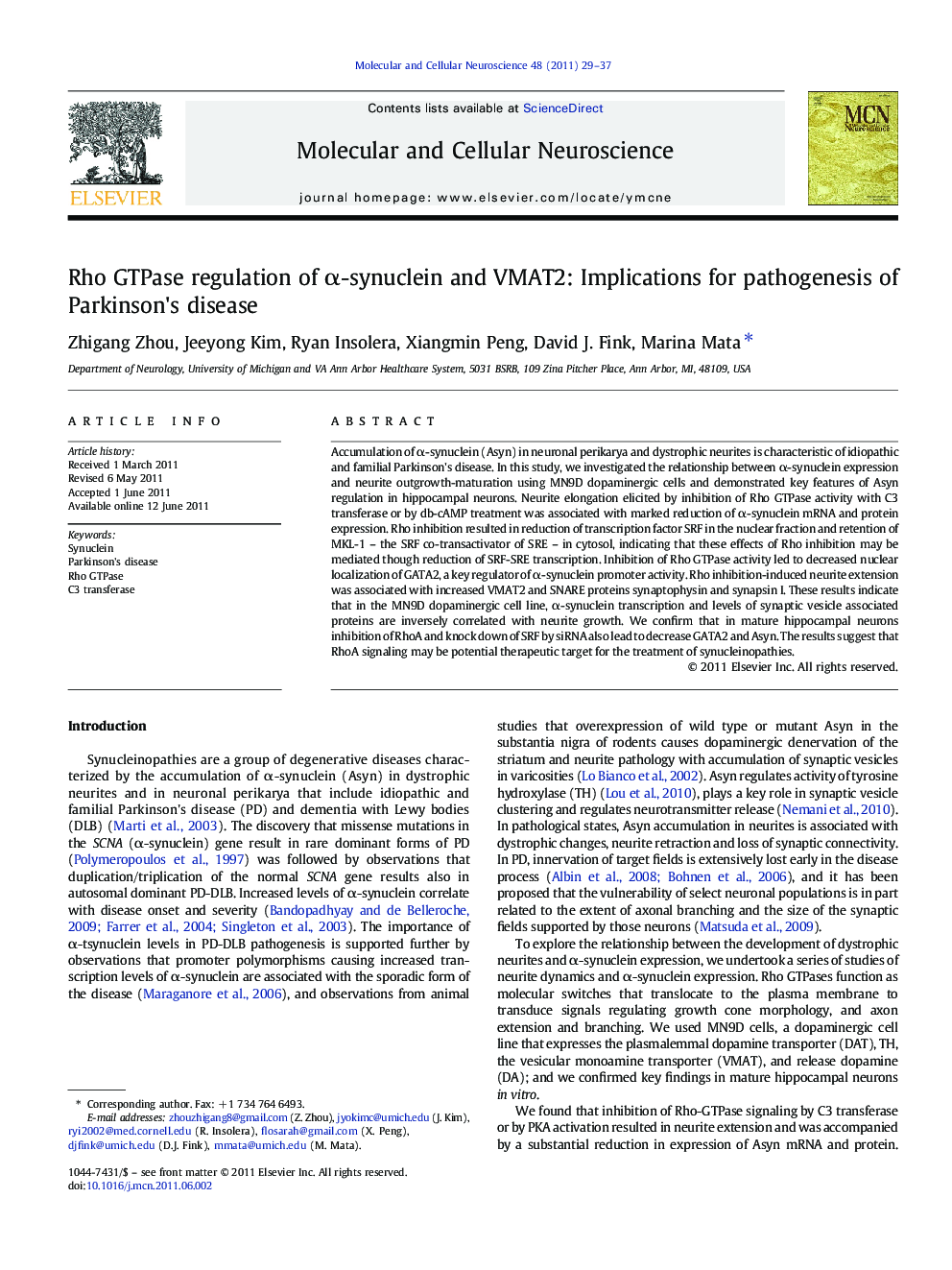| Article ID | Journal | Published Year | Pages | File Type |
|---|---|---|---|---|
| 10956657 | Molecular and Cellular Neuroscience | 2011 | 9 Pages |
Abstract
Accumulation of α-synuclein (Asyn) in neuronal perikarya and dystrophic neurites is characteristic of idiopathic and familial Parkinson's disease. In this study, we investigated the relationship between α-synuclein expression and neurite outgrowth-maturation using MN9D dopaminergic cells and demonstrated key features of Asyn regulation in hippocampal neurons. Neurite elongation elicited by inhibition of Rho GTPase activity with C3 transferase or by db-cAMP treatment was associated with marked reduction of α-synuclein mRNA and protein expression. Rho inhibition resulted in reduction of transcription factor SRF in the nuclear fraction and retention of MKL-1 - the SRF co-transactivator of SRE - in cytosol, indicating that these effects of Rho inhibition may be mediated though reduction of SRF-SRE transcription. Inhibition of Rho GTPase activity led to decreased nuclear localization of GATA2, a key regulator of α-synuclein promoter activity. Rho inhibition-induced neurite extension was associated with increased VMAT2 and SNARE proteins synaptophysin and synapsin I. These results indicate that in the MN9D dopaminergic cell line, α-synuclein transcription and levels of synaptic vesicle associated proteins are inversely correlated with neurite growth. We confirm that in mature hippocampal neurons inhibition of RhoA and knock down of SRF by siRNA also lead to decrease GATA2 and Asyn. The results suggest that RhoA signaling may be potential therapeutic target for the treatment of synucleinopathies.
Related Topics
Life Sciences
Biochemistry, Genetics and Molecular Biology
Cell Biology
Authors
Zhigang Zhou, Jeeyong Kim, Ryan Insolera, Xiangmin Peng, David J. Fink, Marina Mata,
